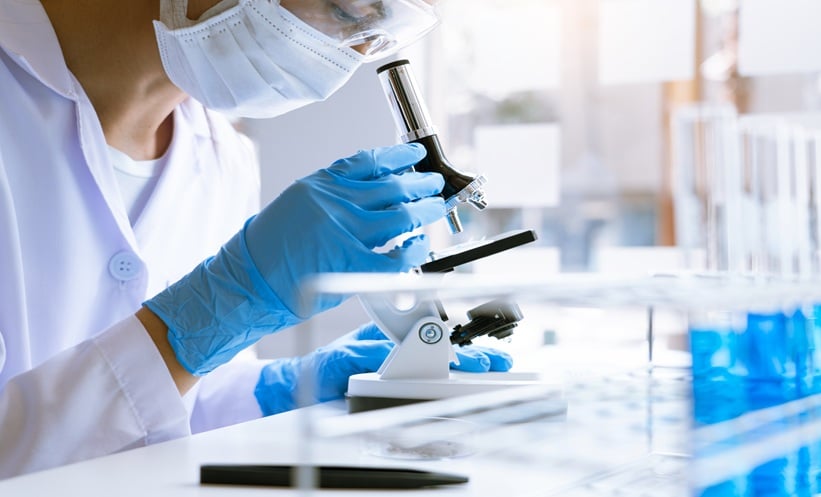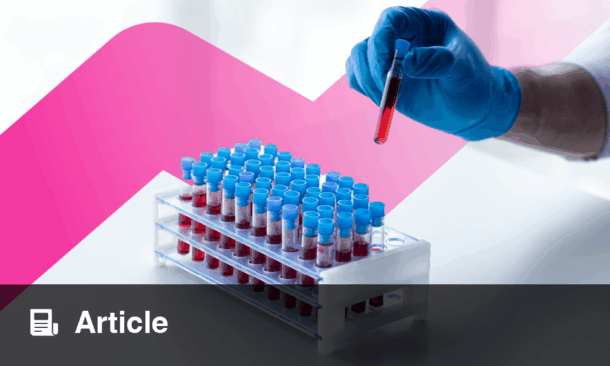Maria Zambon | Head of Respiratory Virology, UK Health Security Agency (UKHSA), UK
Citation: EMJ Microbiol Infect Dis. 2025;6[1]:52-55. https://doi.org/10.33590/emjmicrobiolinfectdis/ITFV1413
![]()
Can you describe the role of the UK Health Security Agency (UKHSA) in responding to emerging infectious disease threats, and how your work in reference microbiology contributes to this mission?
The UK Health Security Agency (UKHSA) is an executive government agency, sponsored by the Department of Health and Social Care. UKHSA’s remit, as an agency with a global-to-local reach, is to protect the health of the nation from infectious diseases and other external threats to health. UKHSA prevents, prepares for, and responds to threats from infectious diseases and environmental hazards. We provide scientific and operational leadership, working with local, national, and international partners to protect the public’s health.
Our work in the Public Health Microbiology (PHM) division provides specialist, scientific expertise underpinning the development and delivery of diagnostics for new, difficult, and dangerous organisms. We organise national laboratory surveillance programmes for key organisms, ensuring that we have baseline data to interpret any significant trends or new signals emerging. As an example, we develop the tests that are used to detect H5N1 in people, in response to the bird flu threat.
Your team at UKHSA is deeply involved in respiratory virus surveillance. During your career, how have diagnostic technologies evolved, and what innovations do you think will be game changers in the near future?
Over a 40-year career in virology, the landscape has changed beyond recognition. As a young clinician in the 1980s, the diagnosis of viral disease relied upon clinical experience and judgement. Taking clinical samples for virology was very much an academic pursuit because virus culture was the only way that the presence of an infectious virus could be detected and usually took, at the very least, several days or weeks to provide a definitive result (either positive or negative). With the discovery and implementation of PCR technology in the late 1980s/early 1990s, this situation gradually started to improve. The earliest PCR detection capability was most useful for bloodborne virus infections or the diagnosis of viral encephalitis but, as the technology was gradually applied to respiratory viruses, it provided the capability of same-day results. This has developed further with rapid PCR testing being applied “near the patient” to give us a “test-and-treat” approach to the management of acute respiratory viral infections.
In parallel, we have also seen the development of rapid antigen tests (lateral flow devices [LFDs]) that were used extensively during the COVID-19 pandemic but actually first appeared in 1999 alongside the licensure of anti-influenza drugs (neuraminidase [NA] inhibitors). The combination of technology development and public awareness of different kinds of tests and testing capabilities means that the landscape for virological diagnosis has made significant leaps and bounds over this period.
Technical innovations that are constantly being introduced contribute to incremental improvements in clinical practice, such as the expansion of home-testing capability, wastewater detection of pathogens, and the application of metagenomics to diagnose rare cases of severe illness. Some of the greatest game-changers, in my view, are the ability to link data in different health sectors in real time to provide actionable intelligence. In other words, information sharing gives as much gain as technical innovation.
You contributed to the development of the first real-time RT-PCR test for SARS-CoV-2 in 2020, with findings published in the highly cited paper, ‘Detection of 2019 novel coronavirus (2019-nCoV) by real-time RT-PCR’. Please tell us more about the research behind this diagnostic workflow.
The story about this work actually begins in 2003. With the emergence of severe acute respiratory syndrome in southeast Asia (Vietnam, China, and Hong Kong), the World Health Organisation (WHO) pulled together a team of international virology laboratories to work together to determine the causality of the disease, which had a high mortality. It was considered likely, in the early days of the incident response, that the causative agent was viral. The international team comprised laboratories in Europe, the USA, and southeast Asia, with a track record in classical and molecular virology. Working together, as a team, we determined that the causal agent for the severe respiratory syndrome was a coronavirus, which became known as SARS-1. Together, we proved Koch’s postulates for SARS-1 and ascertained the likely zoonotic pathway for the emergence of this virus into the human population. Although SARS-1 was eventually fully contained and disappeared from the human population, it was nevertheless a wake-up call for many of us who were involved in outbreak response activities at a national level. I realised that we (UKHSA predecessor organisation, Health Protection Agency) did not have any decent human molecular diagnostic tests for coronaviruses. We therefore spent the next few years quietly establishing coronavirus detection capabilities so that we had these on the shelf, if needed.
The next time we needed these diagnostic capabilities was shortly after the London Olympics in 2012, when a case of severe undiagnosed pneumonia was transferred to a large London ICU from the Middle East. This coincided with a ProMed post about the detection of a novel coronavirus found at post-mortem in Saudi Arabia. Astute junior members of my team noticed the ProMed communication and we decided to test materials from the London ICU case for coronaviruses. To our surprise, this turned out to be a novel coronavirus, subsequently described as Middle Eastern Respiratory virus (MERS). As a consequence of this, my team became involved in national and international investigations, designed to understand the pathogenesis and spread of this coronavirus. We also developed specific diagnostics, which were used by many countries and groups over the next few years.
If we fast forward to January 2020, WHO again pulled together many of the original members of the SARS-1 investigation group to assist with the laboratory aspects of the emerging virus event in China. WHO wanted to publish, as rapidly as was humanly possible, a reliable diagnostic protocol for the new virus. The members of the 2020 team contributed banks of respiratory material, which were used to trial and modify the proposed diagnostic protocols. This work was done in a very short period of time in several laboratories in parallel, using common sets of reagents and stored coronavirus materials, which all participating labs had experience of working with. We then implemented these protocols within the United Kingdom as our diagnostic response to the pandemic and, indeed, found the first case on the 31 January 2020, the day after the WHO declared an international pandemic.
Your research has significantly advanced our understanding of RNA viruses and antivirals. What are some of the most exciting developments in antivirals that you’ve been recently involved in?
Rather like the discussion about changes in diagnostic and clinical virology that have taken place over 40 years, there have been quantum leaps in the development of medicines for the treatment of viral infection. Many of these developments in small-molecule inhibitors of viral replication have emerged from the field of blood-borne viral infections, such as HIV and hepatitis C. The biggest breakthrough for respiratory viral infections has arisen from the structural biology work to understand influenza viral glycoproteins, such as haemagglutinin (HA) and NA, leading the ability to undertake rational drug design based on the knowledge of 3D structure. This led to the development of NA inhibitors, designed to bind to the NA active site, and their subsequent deployment. In recent years, solving the crystal structure of parts of the influenza viral replicase has led to the development of high-potency polymerase inhibitor drugs (e.g., baloxavir).
One of the consequences of the pandemic was the repurposing of direct-acting antiviral drugs that were in the late stages of development for other infections towards the treatment of SARS-CoV-2. This led to the licensure of several new drugs, e.g., molnupiravir, and a renewed enthusiasm from industry to establish a stronger early development pipeline. Also arising from the pandemic experience has been the capability of rapid development of monoclonal antibodies for passive immunisation. While the emergence of viral variants has reduced the efficacy of some of these monoclonals, the pathways now exist for extremely rapid synthesis and scale-up, which is an extremely valuable response capability.
In addition, it is now much more clearly recognised that respiratory infections may also have an important systemic effect, leading to the concept of treatment to suppress viral replication through direct-acting antivirals and treatment to modulate the immune response to viral infection, which may be important in reducing the severity of infection.
Your PhD thesis on the mechanism of action of amantadine led directly to the identification of viral ion channels (M2 protein). Can you elaborate on the research behind this discovery? How did it shape subsequent research in antiviral drug development?
Despite many decades of searching for suitable antiviral drugs to combat influenza, by the late 1970s, only a single compound (amantadine) and its closely related analogue (rimantadine) had been demonstrated to exhibit therapeutic effects in humans. The mechanism of action was not understood when I started my PhD in 1980. Indeed, the objective of the work was to understand how these compounds worked to inhibit viral replication. The overall approach was to try and narrow down the stage of viral replication at which the compounds were working. We soon established that the compound affected both viral entry and viral release from infected cells. At around the same time, within the Medical Research Council, work was underway to solve the three-dimensional structure of the viral haemagglutinin (HA) and its role in viral entry. The two pieces of work converged when it became clear that viral entry required a pH-dependent confirmational change in the viral haemagglutinin (HA), which could be inhibited by amantadine, likely as a consequence of its effect on intracellular, low-pH vesicles. Genetic analysis indicated that the viral gene segment associated with amantadine susceptibility was the M gene and its viral protein derivative, the M2 protein, which was subsequently shown to be a transmembrane protein capable of translocating ions, hence the term ‘viral ion channel’, a novel class of viral proteins not hitherto recognised.
This provided novel drug targets for investigation and served as a prototype for the understanding of equivalent proteins in other virus systems, e.g., Vpu protein in HIV, Nβ in influenza B. The rapid emergence of resistance to amantadine through single-point mutations in the M2 protein also highlighted the importance of having multiple different targets for antiviral drugs.
You’ve been at the forefront of influenza vaccine development, particularly for avian flu strains. What have been the biggest breakthroughs in your work on H5, H7, and H9 vaccines, and what challenges remain?
The biggest breakthrough in historical work on avian influenza vaccines was the importance of the use of strong adjuvants in combination with protein vaccines. This observation holds true, even to the present day, as the immunological responses to avian flu viral proteins in vaccines seem muted. The reasons for this remain unclear and should certainly be the subject of intense work moving forward. The challenge remains how to make effective vaccines at short notice and for millions of people, i.e., how to achieve antigen sparing needed for massive scale-up.
You’ve been involved in multinational EU projects on influenza vaccines and antivirals. What are the key challenges in coordinating large-scale international research efforts in infectious diseases?
There is a necessity for good communication and clear goals. It is often difficult to contain enthusiasm and curiosity in large teams to ensure that overall goals are achieved and problems are solved in a disciplined and prioritised manner. An important factor in developing good teamwork is taking the time to explain the rationale of decisions and inviting discussion. Fostering good social relations is also important when working across teams with different languages.
With the ongoing global focus on pandemic preparedness, what lessons from your work in influenza research could be applied to future pandemic responses?
Progress is incremental. It is important to focus on achievable goals so that there is some measurable improvement in capability to inspire teams. Information flow is as important as technological innovation. Good teamwork is dependent on trust and on working together in the inter-pandemic periods. Once a pandemic happens, there is little or no time for innovation; you have to do what you know how to do and do it at pace.








